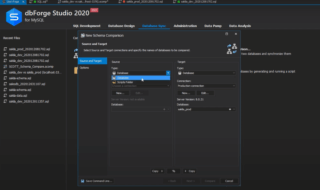Being an email marketer is all about balancing things perfectly. After all, email marketing is the secret potion of many things: right graphics, precise audience segmentation, and relevant email copies, to name a few. Even after getting everything spot on, are your emails still getting bounced?
Well, the success of an email marketing campaign rides on several factors. One such crucial factor is the Email Bounce. You would always experience some of your emails bouncing back. The problem creeps in when this rate escalates.
You might not cut corners from email bounces, but hey, you can always try to keep them as low as possible. Today, I’ll tell you all about email bounces and how to tackle them.
Contents
What is an Email Bounce?

In simple words, an email is classified as a bounced email when it’s not delivered to the recipient. Your message is not delivered to the target audience, and for that, you also receive a notification of non-delivery.
Here are some of the reasons behind bounced emails:
- Maligned IP address: The IP address by which you send emails could be blocked. It is quite possible when the server suspects you of email fraud or spamming.
- Full recipient inbox: A lot of email providers offer limited storage. Hence, the moment the inbox gets full, it bounces all the incoming messages.
- Blocked by subscribers: The recipients can block you if they no longer want to hear from you.
- Overloaded server: An overloaded or unavailable server can also be the cause of bounced emails.
- Invalid email address: An invalid recipient email address can result in a bounce.
- Server distrust: Sometimes, the servers block the emails, resulting in bounces if it doesn’t trust your content.
Types of Bounce
Soft Bounce
Soft bounces are categorized as temporary causes behind email bounces. These bounces usually mean that the email address was valid, and the message arrived at the recipient’s mail server. However, it could not be delivered into their inbox.
Some common reasons behind soft bounces are:
- Server Down: Sometimes, maintenance periods of messaging services cause temporary bounces. Once the maintenance is done, your email is delivered.
- Mailbox is Full: Your email will be rejected if your recipient’s inbox is full. Once the space is there, the server accepts the email delivery.
- Over-sized message: Too large emails for the recipient system can result in a soft bounce.
- Greylisting: This type of spam filtering leads to deliberate delays in email delivery.
Hard Bounce
A hard bounce occurs when the email has been permanently discarded. If you come across a hard bounce from an email address, make sure to remove that recipient from your subscriber list immediately. Here are some common reasons behind hard bounces:
- Unknown domain: If the domain you were using cannot be resolved by DNS or does not exist, then a hard bounce would occur.
- Unknown recipients: A prominent cause of hard bounces, unknown users can lead to a variety of confirmation bounce messages such as:
i. No mailbox by that name is currently available
ii. No such user available
iii. Rejected recipient address
iv. Cannot reach the recipient
- Spam Filters: If your domain has been booked for forwarding spam emails in the past, or your IP has been on a blacklist, your email might get blocked.
- Policy Filters: Sometimes, a few systems deploy email policy filters along with spam filtering. They scan both incoming and outbound emails.
- Recipient Server in the wrong configuration: Misconfiguration of the recipient server can also lead to bounces. You may or may not receive any specific error report in this case.
- File Attachment: Like email policy filters, most mail servers restrict the size and type of attachments in emails. It can be both for incoming and outgoing emails. Overly large attachments result in most frequent bounces.
Having a hard time dealing with high bounce rates? Seeking professional help from Mailchimp email experts or Marketo certified associates would help you a great deal in lowering your bounce rates.
Improving the Bounce Rate
You can work on lowering the bounce rate you by practicing the following methods:
- It is imperative to have a double opt-in campaign for shooting email campaigns. It ensures that a contact responds to an email confirmation in order to be featured in your email address list.
- Make sure that you verify your list daily to eliminate non-responders and invalid emails.
- Monitor your response rates and bounce rates to keep an eye on your email delivery rates. Consistent monitoring would highlight the potential failures before time and would minimize the damage even if they occur.
- If you bought the recipient list, then you might be in serious trouble. You can run into the risk of sending emails to invalid addresses and eventually getting blacklisted.
- You need to identify the content filters which block email messages. It will help you reduce those bounces by identifying the problem and fixing them.
Wrapping Up
Bounce rates directly translate to the quality of your subscriber list. It is essential to have a low bounce rate for having an active subscriber base that meets all the norms. It is normal to have a bounce rate between 2-3% for a healthy subscriber list. If you are experiencing higher bounce rates than this, follow the tips mentioned above and get your list sorted.
Author Bio
Kevin George is the head of marketing at Email Uplers that specializes in crafting Professional Email Templates, PSD to HTML Email conversion, and Mailchimp Templates. Kevin loves gadgets, bikes & jazz, and he breathes email marketing. He enjoys sharing his insights and thoughts on email marketing best practices on email marketing blog.



